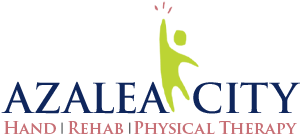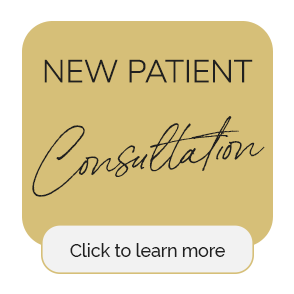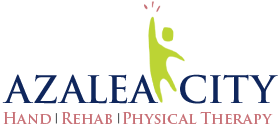Physical Therapy/Occupational Therapy Treatment For A Dislocated Shoulder In Mobile AL

A dislocated shoulder in Mobile AL is one of those injuries that can stop you in your tracks-literally. Whether it's from a sports injury, a fall, or even a sudden jolt, dislocating your shoulder is not only painful, but it also leaves your arm feeling weak, immobile, and unreliable. The shoulder joint is one of the most mobile joints in the body, but with that flexibility comes a higher risk of dislocation. If you've dislocated your shoulder or are worried you might have, physical therapy/occupational therapy can play a crucial role in both your recovery and preventing future dislocations.
In this guide, we'll break down everything you need to know about a dislocated shoulder, from understanding what it is to how physical therapy/occupational therapy can help you get back to full strength.
What Is a Dislocated Shoulder in Mobile AL?
Your shoulder joint, also known as the glenohumeral joint, is a ball-and-socket joint that allows for a wide range of motion. The "ball" at the top of your arm bone (humerus) fits into a shallow "socket" in your shoulder blade (scapula). Because of this unique structure, the shoulder joint has more mobility than any other joint in your body-but that also makes it more susceptible to injury.
A dislocated shoulder occurs when the top of the arm bone pops out of the shoulder socket. In most cases, the ball dislocates forward, known as an anterior dislocation. This happens when the arm is forcefully moved backward, like when you fall on an outstretched hand. While less common, the shoulder can also dislocate downward or backward.
Once the shoulder is dislocated, you may experience immediate pain, followed by weakness and instability in the joint. Without proper treatment, a dislocated shoulder can lead to chronic instability, making it more likely to dislocate again in the future.
Symptoms of a Dislocated Shoulder in Mobile AL
A dislocated shoulder is hard to miss because it causes immediate and severe symptoms. Some of the most common signs that you've dislocated your shoulder include:
- Intense Pain: You'll likely feel sharp, intense pain as soon as the shoulder is dislocated. The pain may spread across your upper arm and chest, making it difficult to move your arm.
- Visible Deformity: When your shoulder is dislocated, it may look visibly out of place. The arm may appear "dropped" or "sagging" compared to your other arm.
- Inability to Move the Arm: After a dislocation, moving the arm becomes nearly impossible due to the pain and the structural instability of the joint.
- Swelling and Bruising: Swelling may occur around the shoulder joint, and bruising can develop if blood vessels are damaged during the dislocation.
- Numbness or Tingling: In some cases, the dislocation can press on nerves or blood vessels, causing a feeling of numbness or tingling down the arm or into the hand.
- Muscle Spasms: As the body tries to stabilize the joint, you may experience muscle spasms around the shoulder, which can increase the pain.
If you're experiencing any of these symptoms, it's important to seek immediate medical attention to prevent further damage.
What Causes a Dislocated Shoulder?
A dislocated shoulder can happen in many different scenarios, often involving a sudden force or impact. Here are some of the most common causes:
- Sports Injuries: Contact sports like football, basketball, or rugby are common culprits for shoulder dislocations. Any activity that involves sudden, forceful movements of the arm, especially overhead, can increase the risk.
- Falls: Falling onto an outstretched arm or directly onto your shoulder can dislodge the joint. This is especially common in activities like biking, skiing, or simply slipping on a wet surface.
- Accidents: Car accidents or other high-impact incidents can lead to a shoulder dislocation, particularly if the arm is forcefully moved in an unnatural direction.
- Genetic or Structural Factors: Some people have more flexible or "loose" shoulder joints due to genetic factors or previous injuries. These individuals are more prone to dislocations and may experience recurrent shoulder instability.
- Repetitive Overhead Movements: Jobs or activities that require frequent overhead movements, like lifting, painting, or swimming, can weaken the stabilizing structures of the shoulder, making dislocations more likely over time.
How Is a Dislocated Shoulder Diagnosed?
If you suspect you've dislocated your shoulder, getting a proper diagnosis is key to effective treatment. Here's how a dislocated shoulder is typically diagnosed:
- Physical Examination: A healthcare professional will examine your shoulder for signs of dislocation, such as deformity, swelling, and tenderness. They may ask you to move your arm to assess your range of motion, though movement is often severely limited.
- X-rays: X-rays are typically used to confirm the dislocation and rule out any fractures or other structural damage. The imaging will show the position of the arm bone and help determine the severity of the injury.
- MRI or CT Scan: In some cases, your doctor may order an MRI or CT scan to assess soft tissue damage, such as torn ligaments or tendons, that may have occurred during the dislocation.
Once the diagnosis is confirmed, the next step is reducing the dislocation-meaning putting the joint back in place. This is usually done by a trained medical professional. But the journey doesn't stop there-this is where physical therapy/occupational therapy becomes essential for recovery and preventing future dislocations.
How Physical Therapy/Occupational Therapy Helps People with a Dislocated Shoulder
Physical therapy/occupational therapy plays a crucial role in recovering from a dislocated shoulder and preventing future injuries. Here's how it helps:
- Pain Relief and Inflammation Reduction
Immediately after the dislocation is reduced, your physical therapist will focus on managing pain and reducing inflammation. This may include:- Cold Therapy: Applying ice to the affected area can help reduce swelling and alleviate pain during the initial recovery period.
- Manual Therapy: Gentle techniques to mobilize the shoulder joint and surrounding tissues can help improve circulation and promote healing.
- Electrical Stimulation: In some cases, electrical stimulation may be used to reduce muscle spasms and improve blood flow to the injured area.
- Restoring Range of Motion
After a dislocated shoulder, it's common to experience stiffness and limited mobility due to the trauma to the joint and surrounding muscles. Physical therapy/occupational therapy focuses on restoring your range of motion through targeted exercises:- Passive Range of Motion Exercises: Initially, your therapist may move your arm for you, allowing the shoulder joint to begin regaining mobility without strain.
- Active Range of Motion Exercises: As healing progresses, you'll begin moving your arm on your own, under the guidance of your therapist, to slowly rebuild flexibility and strength.
- Strengthening the Shoulder Muscles
Strengthening the muscles around the shoulder is crucial to providing stability and preventing future dislocations. Your physical therapist will guide you through exercises that focus on:- Rotator Cuff Muscles: These muscles play a key role in stabilizing the shoulder joint. Strengthening them can help prevent the shoulder from slipping out of place again.
- Scapular Stabilization: Strengthening the muscles around the shoulder blade helps support the shoulder joint and improves overall posture, which is important for preventing further injuries.
- Gradual Progression: Your therapist will gradually increase the intensity of the exercises as you regain strength, ensuring that you rebuild the necessary muscle support without risking reinjury.
- Preventing Future Dislocations
Physical therapy/occupational therapy not only helps with recovery but also teaches you how to prevent future dislocations. This includes:- Education on Proper Movement Patterns: You'll learn how to avoid movements or positions that could put your shoulder at risk, especially during sports or high-impact activities.
- Ergonomic Adjustments: If your dislocation was caused by repetitive motion or poor posture, your therapist will recommend adjustments to your daily activities, such as improving your workspace or changing the way you lift objects.
What Should You Do If You Think You Have a Dislocated Shoulder?
If you suspect you've dislocated your shoulder, here's what you should do:
- Seek Immediate Medical Attention: Don't attempt to pop your shoulder back into place on your own. A healthcare professional should reduce the dislocation to avoid further damage.
- Rest and Immobilize the Shoulder: While waiting for medical care, avoid moving the arm and use a sling or other support to keep it immobilized.
- Apply Ice: Ice can help reduce swelling and numb the area, providing temporary relief until you receive treatment.
- Follow Up with Physical Therapy/Occupational Therapy: After your shoulder is back in place, physical therapy/occupational therapy is critical for a full recovery. Schedule a consultation with a therapist to begin your rehabilitation plan as soon as possible.
Strengthen and Stabilize Your Shoulder with Physical Therapy/Occupational Therapy at Azalea City Hand and Rehab and Physical Therapy
A dislocated shoulder is a painful and frustrating injury, but it doesn't have to be the end of your active lifestyle. With the right approach, including a personalized physical therapy/occupational therapy plan, you can not only recover fully but also prevent future dislocations. Physical therapy/occupational therapy focuses on restoring strength, improving mobility, and teaching you the tools you need to avoid re-injury.
If you've dislocated your shoulder or think you may be at risk, don't wait-reach out to a physical therapist at Azalea City Hand and Rehab and Physical Therapy today and take the first steps toward a strong, stable, and pain-free shoulder.
OFFICE HOURS
Monday
8:00am - 5:00pm
Tuesday
8:00am - 5:00pm
Wednesday
8:00am - 5:00pm
Thursday
8:00am - 5:00pm
Friday
8:00am - 12:00pm
Saturday & Sunday
Closed
Azalea City Hand and Rehab and Physical Therapy
316 S Sage Ave Ste C
Mobile, AL 36606


